When Eric and I were putting together our honeymoon fund, one idea kept floating to the top of my brain. I wanted to see orangutans in the wild. Long the top ape in my personal but exhaustive list of primates, orangutans are better than most people; they’re highly intelligent, feel confident in orange and are arboreal—they are literally above us!
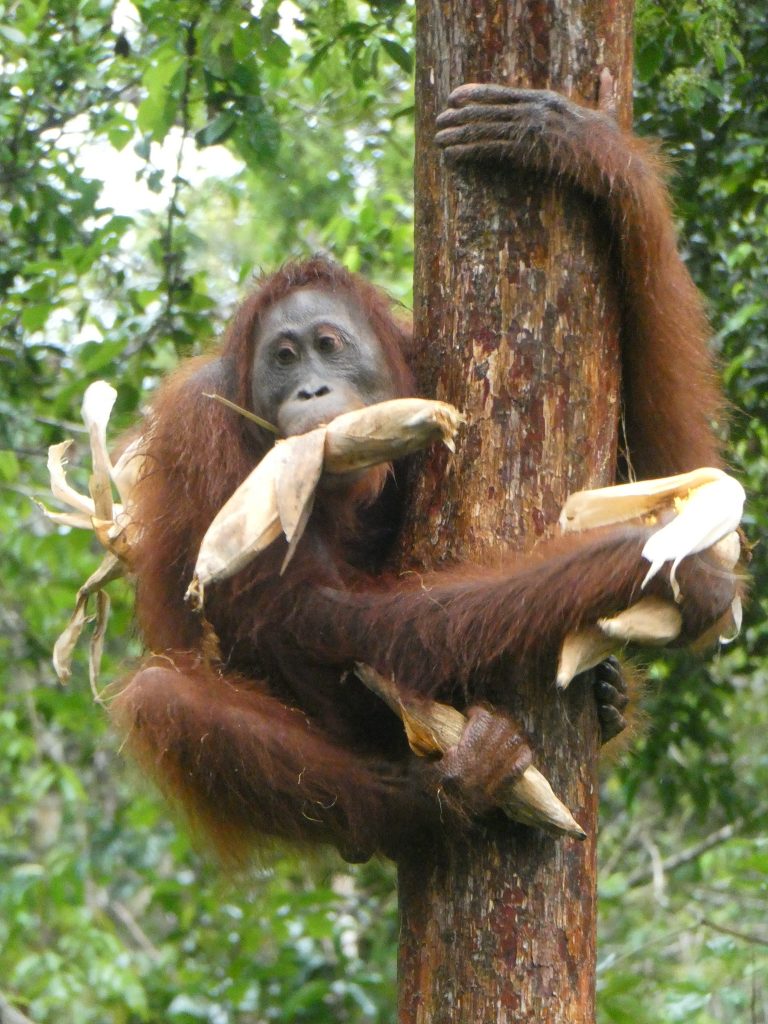
As we continued to not plan our honeymoon, I assumed that traveling to Borneo was out of reach. It would take too much time and money out of our trip. After a few days in Jogjakarta, we started to think about where we were going next. I had completely written off Borneo, but luckily Eric had not. We found a cheap, if not highly convenient flight with an overnight in Jarkarta and made our way to the third largest island on earth.
Side note- Did you know Indonesian airlines need 48 hours to book a flight online? If you, like me, need a flight to Borneo in less than 48 hours you can buy your tickets from the local convenience store. Be aware, they only take cash so be sure to hit up as many ATMs as possible with a stack of bills like J-Lo in Hustlers. Then give this five-inch tall stack of cash to the woman at the Indonesian 7-11, cross your fingers and take your tiny paper receipt.
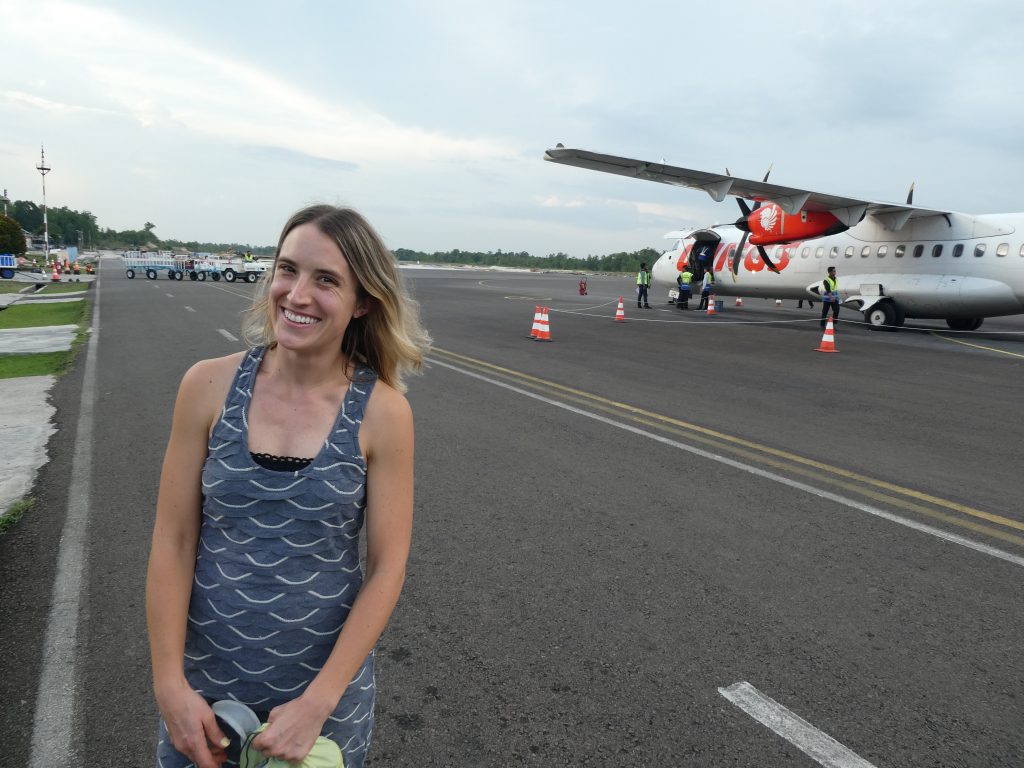
There are a few places to see orangutans in Indonesian Borneo. I confess we went with the least adventurous option: a river cruise through Tanjung Puting National Park. Tanjung Puting is located in the central part of Borneo’s southern coast. The park is famous for Camp Leakey which was founded in 1971 by primatologist Birut Galdikas. Camp Leakey was created not only to study Orangutans but to reintroduce captive orangutans into the wild.
Our exploits began in Pangkalan Bun, a city that is best known for farming bird nests for soup. The night before our cruise, Eric and I walked around the giant windowless concrete structures. I was shocked by the volume of the chatting bird song. We could hear the birds from blocks away in a cacophony that almost sounded like the soundtrack of a Rainforest Cafe. Imagine my bubble bursting when our tour guide told us the next day that, well, it was all prerecorded. Did I really expect swifts to sound like a rock concert? It turns out that farmers competing to attract more swifts to their silos will pay to have loud bird sounds piped into the streets of the sleepy town. Does your smug neighbor have more nests then you? Just turn it up to 11!
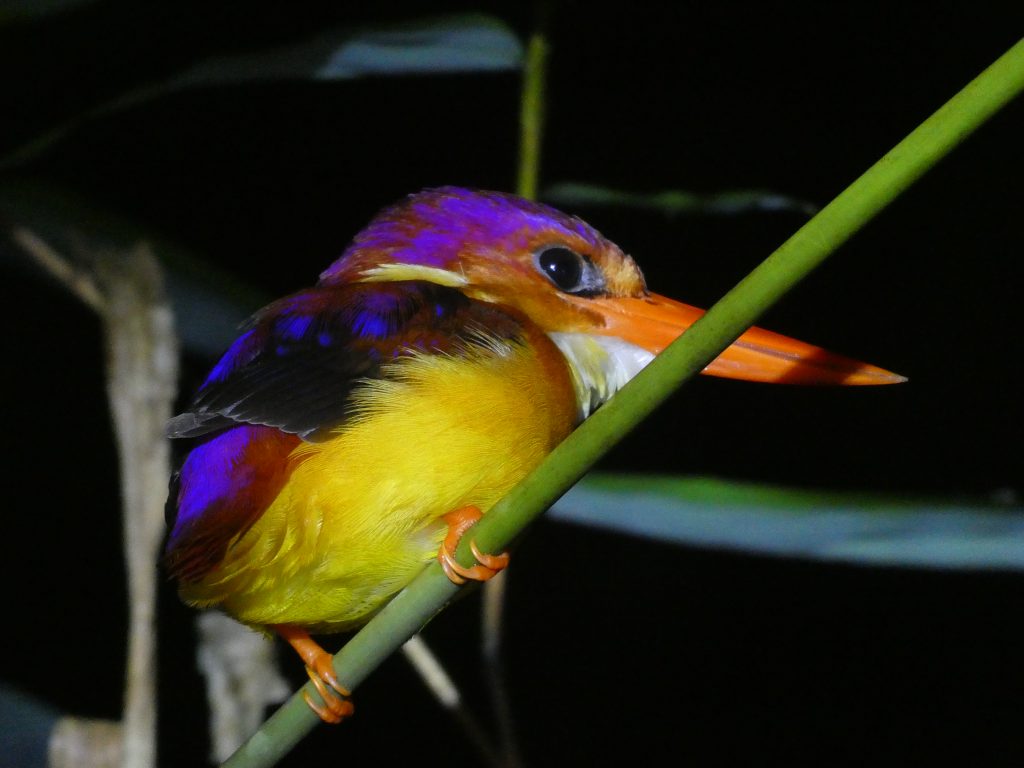
The next morning Eric and I set sail down the Kumai River in our romantic klotok boat for two. Okay, klotok boat for six. A klotok is a large riverboat named for the “klo tok tok tok” sound of the engine. Our adorable boat was to be our home for the next three days. The trip from Pangkalan Bun to Camp Leakey only takes about seven hours via klotok if you travel direct. Our trip was three days, with many stops for hikes, feeding stations, and meals. So many delicious meals.
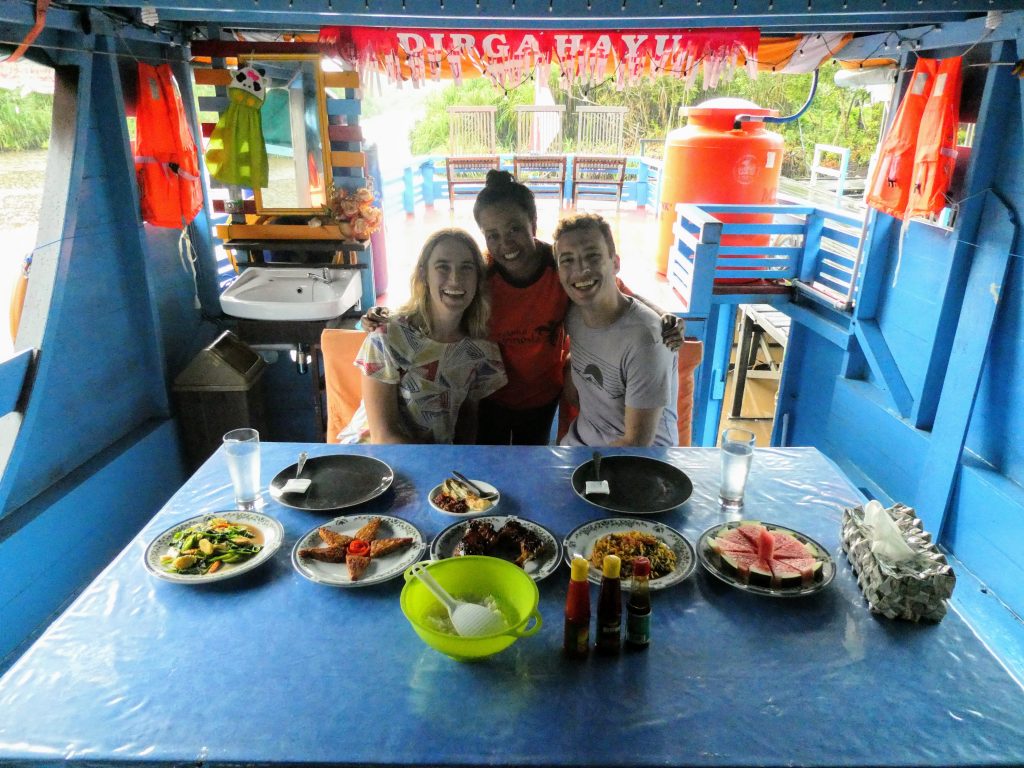
I was excited to adventure into the Borneo jungle but I wasn’t optimistic that we would see many animals. Within the trip’s first few hours, I discovered exactly how wrong I was. We saw emerald green pit vipers, troops of proboscis monkeys and mudskippers, all before our first orangutan feeding station. Camp Leakey is the third and most famous of the national park’s feeding stations. Originally designed to help the rescued orangutans supplement their foraging, the feeding stations are still around as the formerly captive orangutans can not return to being fully wild. Our incredible guide Diaz warned us that we may not see any orangutans at the stations as November is the cusp of the rainy season and many orangutans can find enough food on their own. The orangutans are fed on elevated platforms kept away from the tourists so I was shocked not only to see an orangutan but that my first encounter would entail surprise as one passed a few feet above me in a tree. This orangutan waited in the treetops until the rangers brought baskets of corn (extremely popular), potatoes (not popular) and mangos (kinda popular). Before the rangers had disappeared, a few orangutans began to gobble up the snacks. The first few orangutans were juveniles or females with infants. Eventually, an adult male arrived, dwarfing everyone else while he leisurely ate corncobs. Seeing these noble animals in the wild was a thrill. We watched them for hours, coming and going in the treetops.
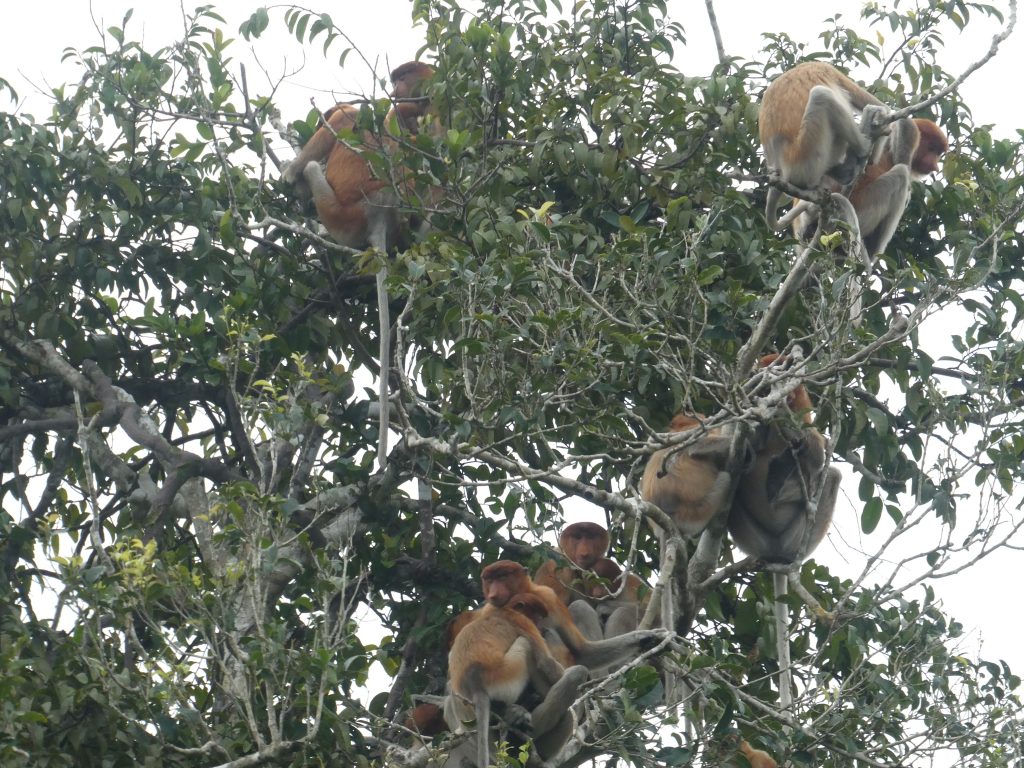
After leaving we returned to our boat for another marvelous meal. The highlight of my time in Borneo was that first night. A large group of proboscis monkeys were preparing for bed in a group of trees on the riverfront. Eric and I listened to them hoot and squeak at each other all fighting for the best branch to sleep on. It was a magical experience. Unlike the orangutans, these were all fully wild animals living in their native habitat and ignoring us completely. I have never seen anything like it.
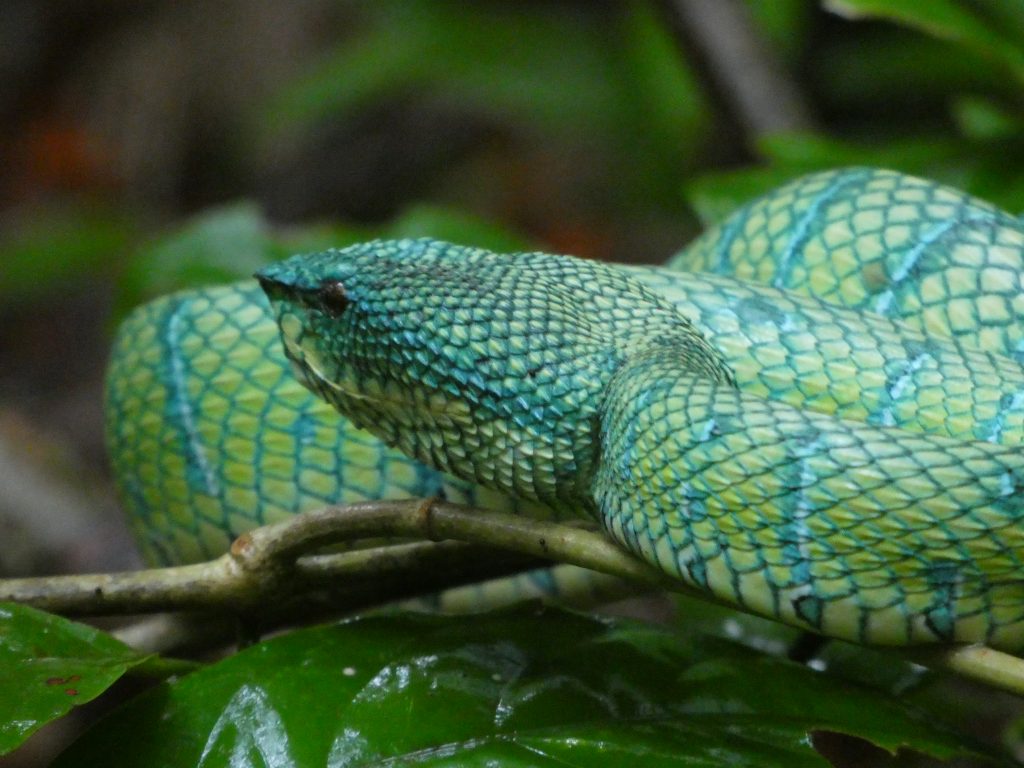
The following day was rainy which meant we saw fewer animals than the day before. On the upside, we got to see the orangutans adorably create umbrellas out of leaves. Between meals, our guide Diaz let us know that he had a surprise for us. Last time he told me that, Diaz took a tiny water snake out of his backpack for me to release. It ruled! Diaz had been hyping this surprise all morning and I had gotten pretty worked up about it. Could it be another backpack snake? Diaz went downstairs and returned with a small crate. When he opened it, the cutest animal I have ever seen was inside: a Slow Loris.
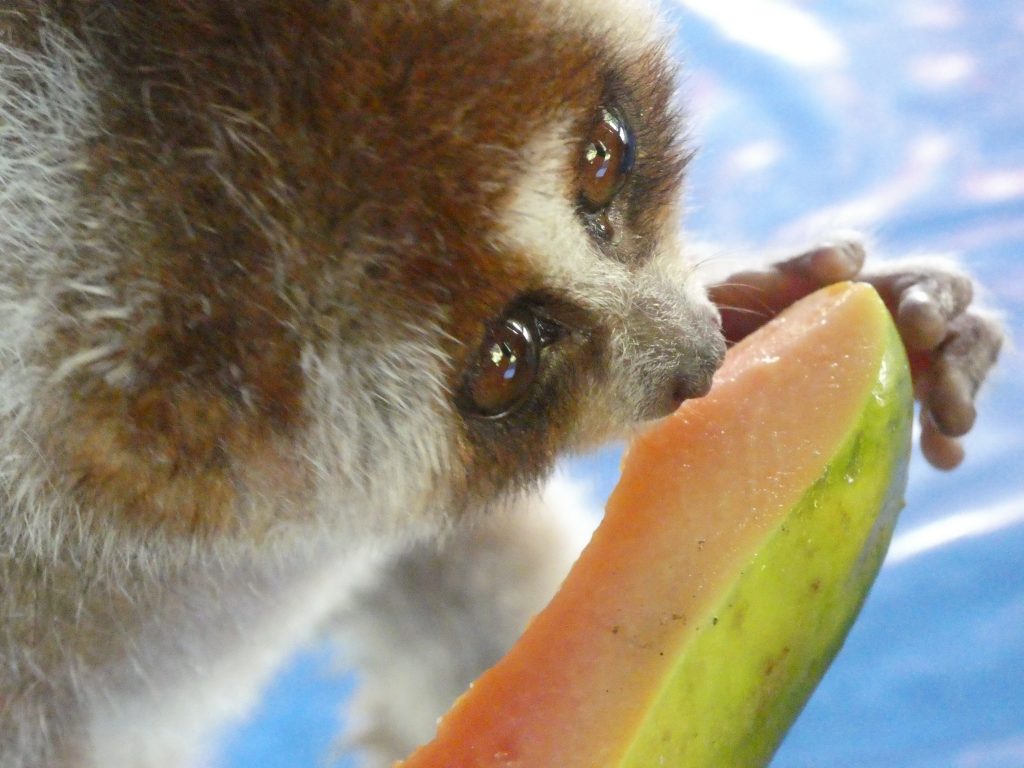
If you, like me, have no idea what a slow loris is, I promise that seeing one in the flesh will make your heart melt with its gigantic eyes. Looking like a sloth mixed with a monkey, slow loris’ are omnivorous primates with toxic saliva. Their adorable looks make them prime targets for the pet trade which is how Diaz came to find this one. Diaz is from the small village inside the national park. He’s a young man and an animal nut; he has a reputation for being the guy you go to when you find an animal on your farm and need it relocated. Diaz volunteers to go to his neighbors’ homes and release the animals further into the park. As he is a local, people trust him, and many animals are rescued that might otherwise be killed. This slow loris was being kept in a cage by a local farmer as a pet for a year before the animal began to get mange. The farmer wanted to sell the slow loris but decided instead to contact Diaz who treated it for mange and then released it into the wild. Eric and I were lucky enough to witness the entire thing. The little guy started slowly when placed on the ground but then started to take off, silently climbing up the trees until we couldn’t see it from the ground. Safe travels little guy!
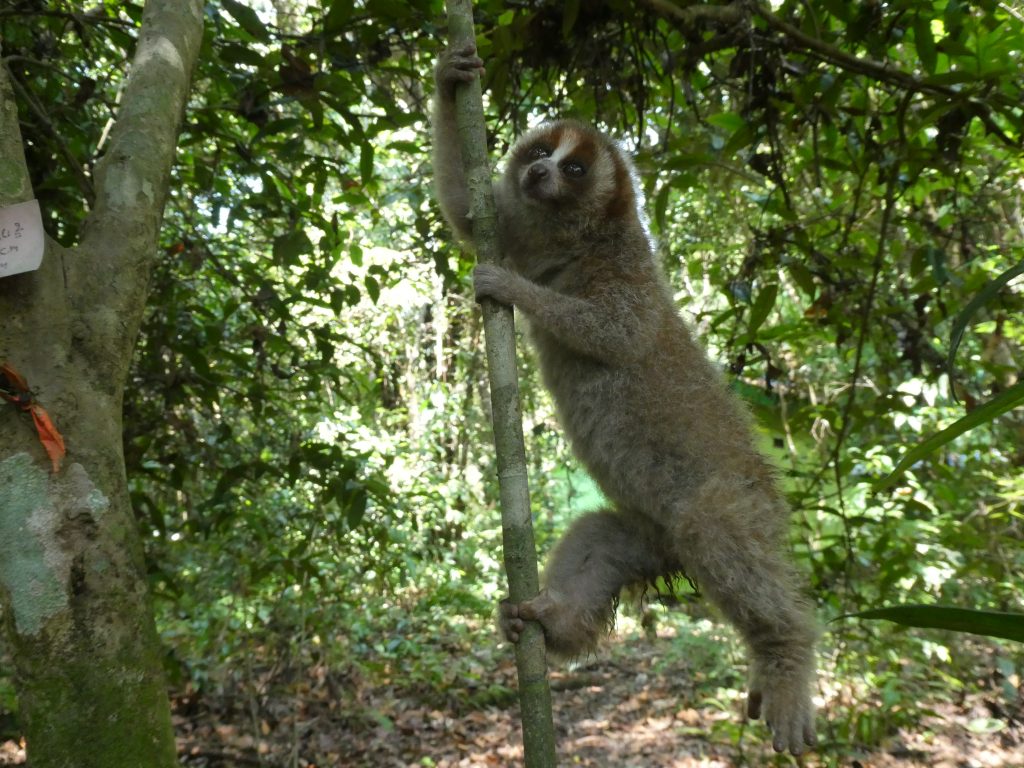
Our final day in Borneo was a little different. We swapped our klotok for a canoe with an outboard motor. Instead of focusing on wildlife, we were off to Diaz’s hometown so we could meet some of his family. The canoe glided up the narrow river, where we stopped to take pictures of a brightly colored kingfisher. While Eric and I were bird watching, Diaz had spotted a snake in the upper branches of a nearby tree. This gold and black snake wouldn’t have been spotted with my sub-par eyesight but Diaz is a natural. After taking even more photos and a quick run-in with a monitor lizard, we waded the last half of a kilometer to the village for lunch.
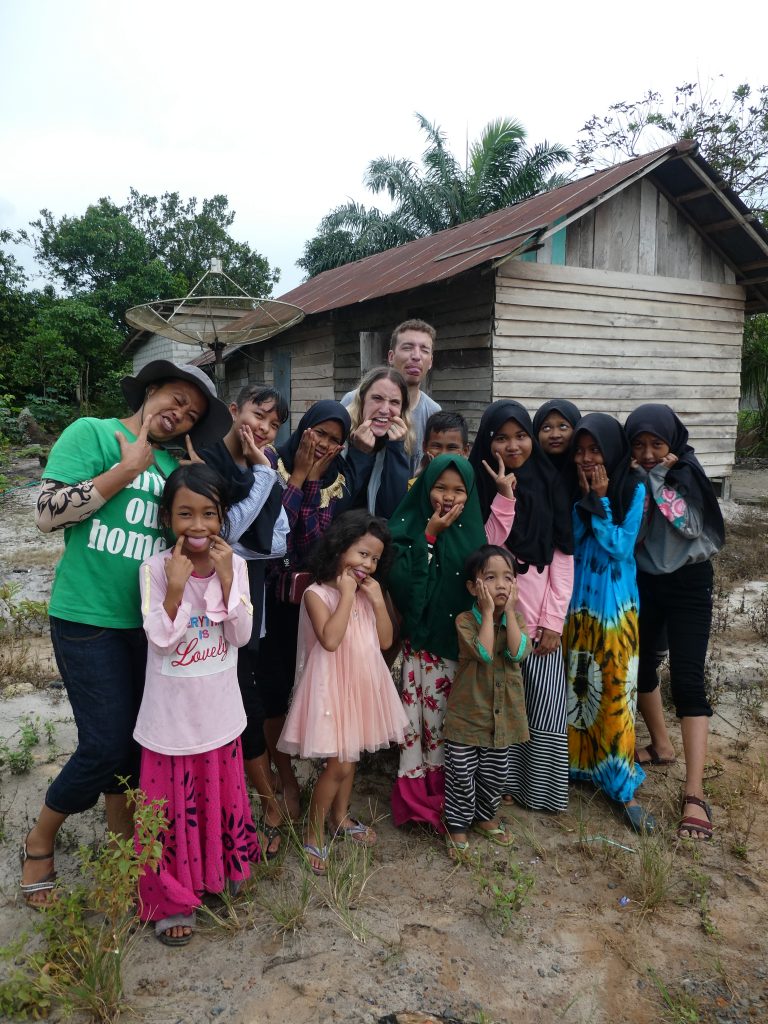
A group of eight rowdy neighborhood kids entertained us while lunch was being made by showing us an endless loop of their TikTok videos. After a memorable and delicious lunch of local river snails, we toured the village. We even had time to catch sight of rowdy macaques before rushing back to town to catch our flight.
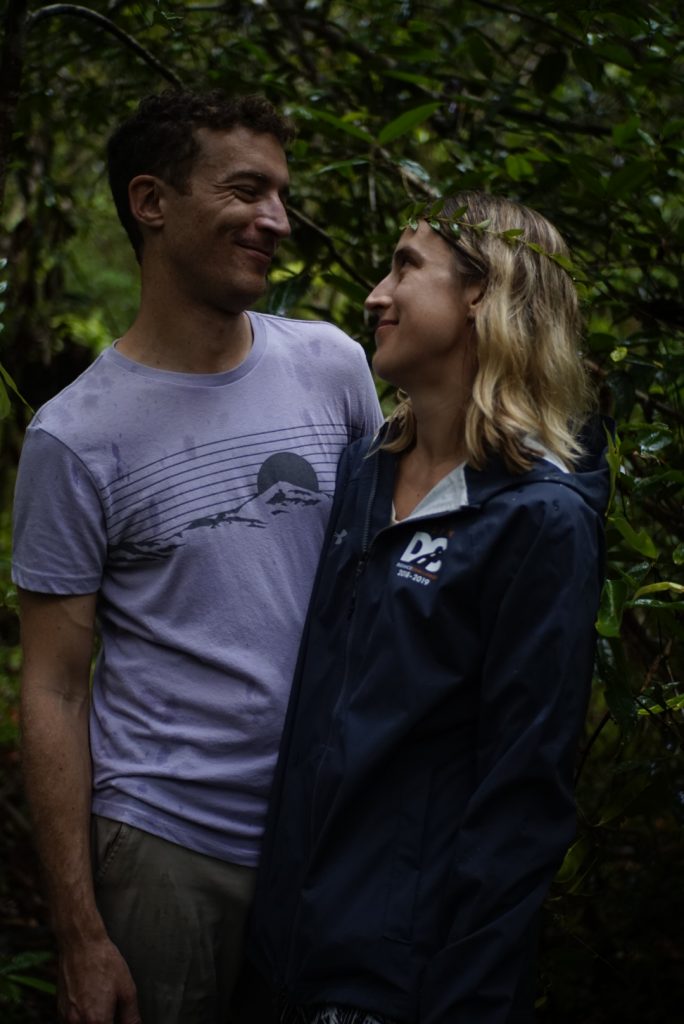
Was this ethical?
It was extremely important to me that our trip to see Nanjung Puting National Park was as ethical as possible. We did our research; Camp Leakey is a World Wildlife Fund Good Nature Destination and Orangutan Green Tours uses some of its profits to purchase more land to buffer the edges of the natural park. That being said our trip wasn’t perfect. Camp Leakey has accidentally created cross breeds of orangutan species which are threatening the native population. The klotok boats are a luxurious way for two people to travel yet it creates human waste which is dumped into the river. In the end, the question will be is this ecotourism helping protect our distant cousins or threatening them further? I know that I was forever changed by my experience. Hopefully I didn’t return the favor.
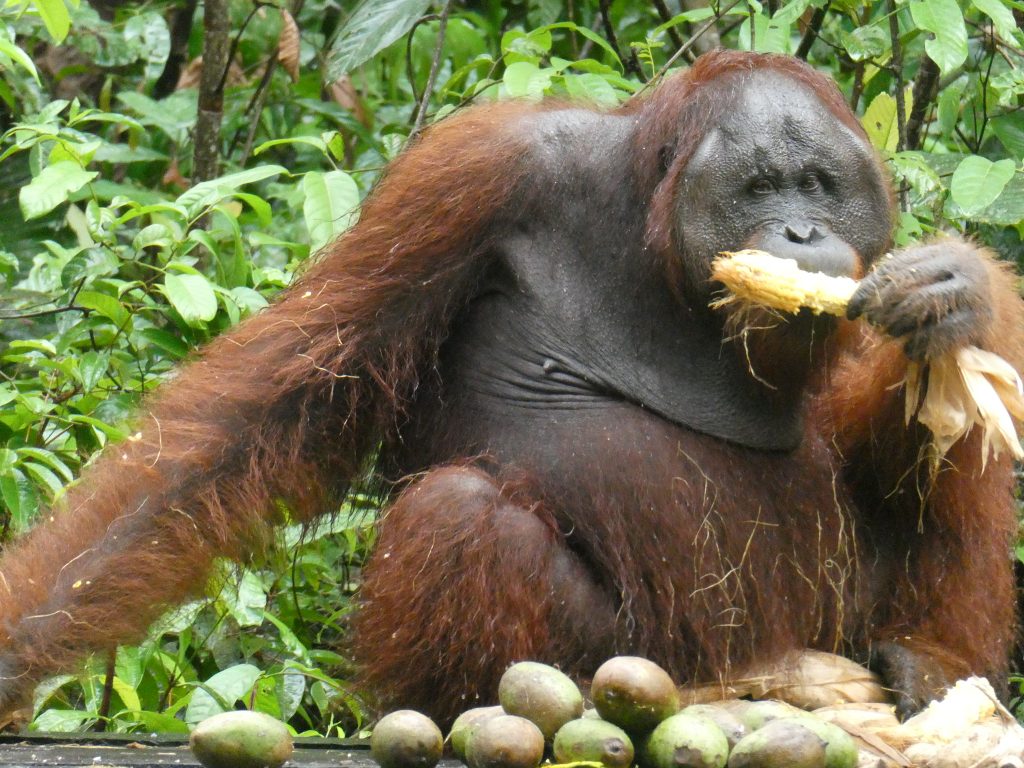

Be First to Comment